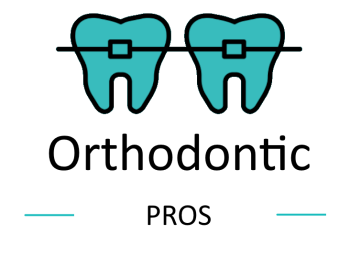Table of Contents
 When you close your mouth, do your upper front teeth noticeably overlap your lower front teeth? If so, you may be dealing with an overbite. This dental issue can arise from various factors, including genetics, differences in jaw size, thumb-sucking habits, or even prolonged pacifier use. Let us unravel the mysteries behind overbites and the transformative power of orthodontics!
When you close your mouth, do your upper front teeth noticeably overlap your lower front teeth? If so, you may be dealing with an overbite. This dental issue can arise from various factors, including genetics, differences in jaw size, thumb-sucking habits, or even prolonged pacifier use. Let us unravel the mysteries behind overbites and the transformative power of orthodontics!
Numerous individuals opt to live with an overbite without seeking treatment. A notable example is the late rock legend Freddie Mercury, who chose to retain and embrace his pronounced overbite. Meanwhile, some individuals pursue treatment primarily to enhance their dental alignment, improving their aesthetic appeal. However, others require treatment to prevent complications, such as jaw disorders and damage to the teeth and gums.
What is an Overbite?
An overbite, often buck teeth, occurs when the upper teeth protrude beyond the lower teeth. While minor overbites are frequent and typically insignificant, severe occurrences can impact biting and dental health.
In cases where the overbite is excessively severe, it has the potential to cause irreversible harm to the teeth and result in temporomandibular joint dysfunction. Moreover, pronounced buck teeth can significantly alter the facial structure, potentially leading to psychological challenges and diminished self-esteem.
What Causes Buck Teeth?
Overbite often has a hereditary component, which can be passed down through generations. However, external factors can contribute to the movement of teeth and the development of an overbite. These factors include.
Thumb Sucking
Thumb-sucking is a normal behavior for young children. However, if this habit persists beyond the age of three or four, especially when the permanent teeth are emerging, it can exert pressure on the developing teeth. This pressure can lead to permanent teeth coming in at an abnormal angle, contributing to the formation of an overbite. Monitoring and addressing prolonged thumb-sucking is crucial to minimize the potential impact on dental alignment.
Pacifier
The 2016 Journal of the American Dental Association found an association between pacifier use and an increased risk of malocclusion. The prolonged use of pacifiers, especially as the permanent teeth erupt, can apply pressure on the developing teeth and contribute to the development of an overbite or other misalignment issues.
Tongue-thrusting
When the tongue is consistently pushed forward in the mouth, it typically exerts pressure on the teeth, causing them to shift forward. This commonly leads to an open bite malocclusion, where the upper and lower front teeth do not meet when the mouth is closed.
Teeth Grinding
Many individuals unknowingly grind their teeth, with teeth grinding frequently occurring during sleep. Bruxism, or tooth grinding, has been related to the development of an overbite and can cause jaw and head pain. Furthermore, it can hasten dental enamel degradation, increasing the risk of tooth decay.
Missing or Impacted Teeth
The spacing or crowding of teeth can indeed impact the alignment of the front teeth. When there is excessive spacing between teeth or overcrowding, it can affect the proper positioning of the front teeth. Additionally, the absence of one or more teeth can shift neighboring teeth over time, further influencing the overall alignment.
Genetics
Some people have inherent variances in their jaw anatomy, such as an uneven or smaller upper or lower jaw. Furthermore, the existence of an overbite might be inherited, increasing the risk of acquiring the problem if parents or relatives have it. Genetic factors significantly influence dental and skeletal development, including jaw alignment and the occurrence of an overbite.
Tumors and cysts of the mouth or jaw
The presence of tumors and cysts in the mouth or jaw can impact teeth alignment and the mouth and jaw shape. This occurs when persistent swelling or growth in the soft tissues or bones in the upper part of the mouth leads to a forward shift of the jaw.
Furthermore, chronic nail-biting and chewing hard objects like pens or pencils are among the causes of overbite. These habits can contribute to the development of an overbite over time.
Types of Overbites
There are different types of overbites, each with its characteristics and potential complications. Understanding these various types is essential in recognizing and addressing specific overbite-related concerns.
Vertical – This is the most common type, where the upper front teeth excessively overlap the lower front teeth vertically.
Horizontal – In this type, the upper front teeth protrude horizontally beyond the lower front teeth, creating a horizontal gap.
In some cases, patients may simultaneously display signs of vertical and horizontal overbite. Overbites can also be categorized as either dental or skeletal. A dental overbite refers to issues where the teeth themselves are primarily responsible for the buck teeth’ appearance. On the other hand, skeletal overbite occurs when the condition is caused mainly by the positioning or size of the jaw.
What issues can Overbites cause?
If left untreated, this condition can give rise to a range of issues that may include tooth loss, problems with tooth crowding, difficulties with flossing and brushing, pain during eating, crossbite, headaches, and gum disease or periodontal disease.
Fixing Buck Teeth/Treatment for Overbite
In most cases, orthodontic treatment is necessary to address this condition, as relying solely on medication is typically insufficient. Treating overbite in children is generally more manageable due to their ongoing jaw development. However, adults may encounter more significant challenges if they have not received prior treatment, as the symptoms tend to be more severe at this stage.
Regardless of the individual’s age, the specialist will thoroughly examine the affected area and propose suitable treatment options. The duration of these treatments can vary but typically lasts around two years or possibly even longer.
Your dental professional may recommend various treatments to address your overbite. Some common dentistry treatments that they may suggest include:
Children:
- Teeth removal of primary teeth makes room for the permanent ones to grow.
- Growth modification device to better position the jaw.
- Dental Braces
- Retainer (orthodontics)
Adults:
- Adult Braces – one of the best methods to correct this condition.
- Tooth extraction – orthodontists may try to avoid this procedure and will only suggest it if the case is too severe.
- Surgery – for skeletal-type problems, surgery is recommended.
An overbite occurs when the upper front teeth overlap the lower front teeth. Left untreated, it can lead to complications like tooth loss, crowding, and gum disease. Orthodontic treatment is often necessary, with options ranging from braces to surgery, depending on the severity.

